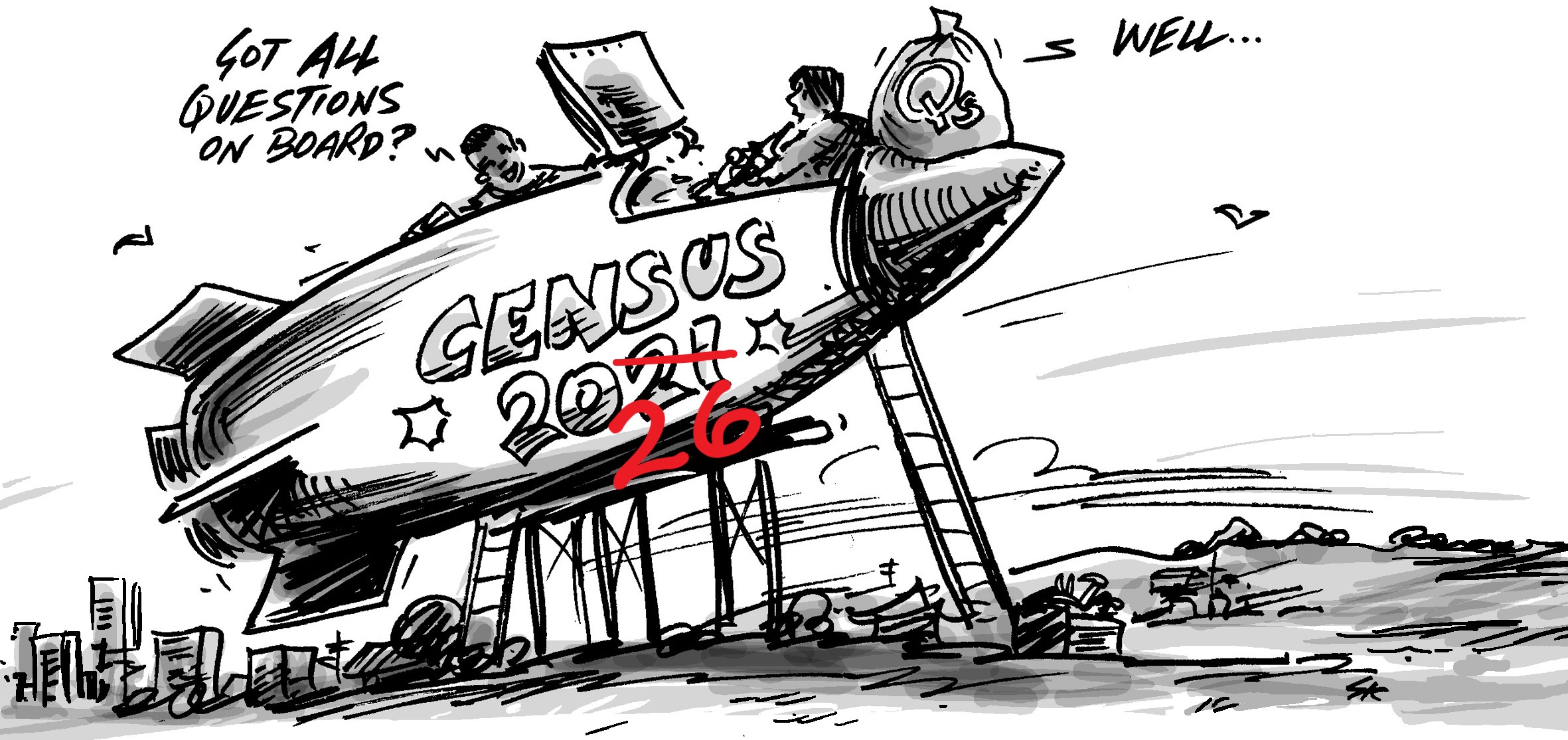The Australian Census 2011 results are imminent, so I thought it would be worth revisiting some of the predictions I made for the Census results, around the time the Census was actually being collected. I promised I would review them after the Census release and see how well I did, but a few things have changed in the intervening (almost) year, so I thought I’d take this opportunity to explain the predictions a bit more, and modify a couple.

These predictions are based a little on gut feel, anecdotes, and some on hard evidence like birth rates and .id’s population forecasts.
1. EARLIER RELEASE DATE – I predict that the ABS will release the first data from the 2011 Census on Wednesday June 20th, 2012. Last Census it was the 27th of June 2007 and they always like to improve their processing time, even slightly, every Census!
This one has already been proven wrong – but I was only one day out, so I don’t feel too bad about this. Official release date (1st release) is June 21st, 2012.
2. MORE AUSSIES OVERSEAS – I predict that Australia’s total Census count will be 21,605,452- might as well pick a number that looks exact. This will lead to a total Estimated Resident Population (ERP) of 22,500,000 or so, but I’m predicting a greater difference than previous Censuses, due mainly to more people being overseas on the night.
I will be wildly surprised if my guess at the Census count proves correct, but hopefully it’s in the ballpark. More Australians overseas (and therefore missing out on the Census count but included in the ERP) is based on the high Aussie dollar at the time, and my discussions with many people who seemed to be overseas during the winter of 2011.
3. FASTEST GROWING STATE – Western Australia will have the largest percentage growth from 2006-2011 Census, but Victoria will have the largest numerical growth in the Census count, pipping NSW at the post.
This prediction is not a shot in the dark, but is solidly based on the preliminary Estimated Resident Population figures which show Victoria’s growth over 5 years at 494,000 and NSW at 486,000. It’s possible that the Census could overturn these figures if it turns out that NSW growth is higher after all, but it’s also backed up by the number of building approvals, where Victoria has had more than 85,000 extra building approvals compared to NSW. Based on these numbers it’s less likely that Census will overturn the preliminary ERP and more likely that the gap will actually widen.
4. BOOMING BABIES – The number of people aged 0-4, which declined from 1991 to 2001, and then increased by 16,000 from 2001-2006 will increase by a much larger amount, around 100,000 from 2006-2011. This is due to the significantly increased birth rate since 2006, and is supported by .idforecast numbers for 2011.
Again, this prediction is based on solid evidence of the birth rate and preliminary ERP. If anything it’s a bit conservative. The ERP and .id’s forecasts show that the likely increase is more in the vicinity of 200,000 (around 15%).
5. CHANGING MIGRANT INTAKE – Burma, Iran, Nepal and Zimbabwe will be the birthplace countries with the largest percentage increase in Australia’s population, with large humanitarian intakes, but in raw number terms, India will show the largest increase, followed by China, mostly skilled and family reunion migration.
I made this prediction in a hurry, and after that I had a much better look at the figures. The UK is likely to actually show the largest growth overall, as it has done for the last century or so, though in NSW it will be China and in Victoria it will be India. For the fastest increases, I’d include those same 4 countries listed, but add Bhutan, DR Congo, Sierra Leone and Burundi.
6. MORE KIDS AT HOME – More children will be staying at home longer (sorry!) I predict that 40% of those aged 20-29 will be still living at home with one or more parents (32% in 2006), while for 25-29 year olds it will increase from 18% to 25% still living with parents.
This one is more about gut feel – I made it up as one of the possible explanations for a potentially increasing household size. I still think it’s likely that we’ll see an increase in independent children living at home, but I’m not sure whether it will be of this magnitude. We won’t be able to answer this one until we get access to the ABS Tablebuilder in August, as it’s not a standard dataset.
7. CHANGING HOME OWNERSHIP – Due to housing affordability pressures, there will be an INCREASE in full home ownership (those who bought some time ago and have paid off their mortgage, from 32.6% to about 35%) and an INCREASE in renters (from 27.2% to about 30% ). There will be a corresponding DECREASE in those households with a mortgage, from 32.2% to about 29%.
This prediction is probably a bit of a stretch, given that it flies in the face of other surveys conducted recently by the ABS. Eg. Home Ownership. Of all my predictions, this is the one I now rate as the least likely to be correct.
8. LESS HOUSING AFFORDABILITY – This housing affordability issue will impact significantly on those in their 30s, where there will be an increase in the proportion of renters from 30.5% in 2006 to about 38% in 2011.
Another prediction on home ownership, similar to number 7. We won’t be able to find the answer to this one in the standard datasets so it will need to wait for Tablebuilder in August.
9. MORE SAME SEX COUPLES – Due to a change in the definition and increased publicity, the number of same sex couples will increase from just under 25,000 in 2006 to over 50,000 in 2011, but still represent only about 1% of all couples.
The change in the definition is minimal – the ABS will now be coding as same-sex defacto relationships those same-sex couples who indicate that they are “Married in a registered marriage”, even though that is not legal in Australia. A larger increase is likely to be due simply to the publicity at Census time for same-sex couples to record their relationship on the form. We won’t know about this one until we get access to Tablebuilder in August, as it’s not a standard dataset.
10. BIGGER HOUSEHOLDS – With more children staying at home for longer, a higher birthrate and declining housing affordability, we will see an increase in the average household size from 2.56 people per household in 2006 to 2.65 people per household in 2011, the first increase in 6 Censuses.
This is the big prediction which underlies several of the others here (4, 6, 7 and eight) – the preliminary ERP estimates when compared to building approvals seem to indicate a rise in household size, which will go against the trend of recent decades.
11. INCREASE IN “NO RELIGION” AND “CHRISTIAN NFD” – My final prediction is a new one concerning everyone’s favourite Census question – Religion. Around Census time there was a big push for people to answer “No Religion” on the Census form if they were not currently religious. The trend of “No Religion has been upwards for many Censuses, and rise of the atheist movement has been quite considerable over the last 5 years. So it’s not much of a stretch to say that there will be another significant increase. I predict it will rise from 3.7 million (18.7%) in 2006 to around 4.6 million (21.2%) in 2011.
The other category I’m predicting an increase in is “Christian Not Further Described”. There was a somewhat misguided email going around at Census time asking people to “tick the Christian box”, despite the fact that there is no “Christian” box on the Census form. Based on this, and an increasing number of people not identifying with a particular Christian denomination, the Christian NFD category will be increasing further (that’s where people ignore the boxes for denominations and write in “Christian”). The existing trend is clear. While there were declines in Anglicans, Uniting Church etc. “Christian NFD” went from 186,000 people in 1996 to 313,000 people in 2006. I’m predicting 400,000 for 2011.
For those predictions which can be tested based on standard datasets, I will be providing a blog post after the data are out next week. The others I’ll provide updates as the non-standard datasets become available over the next few months.
Australian Census 2011 data will be released on 21 June 2012. Do check out this space or join us on twitter @dotid if you would like to receive more updates about the Census or information about demographic and economic trends. You may also like to visit us at id.com.au where you can access our demographic resource centre.












